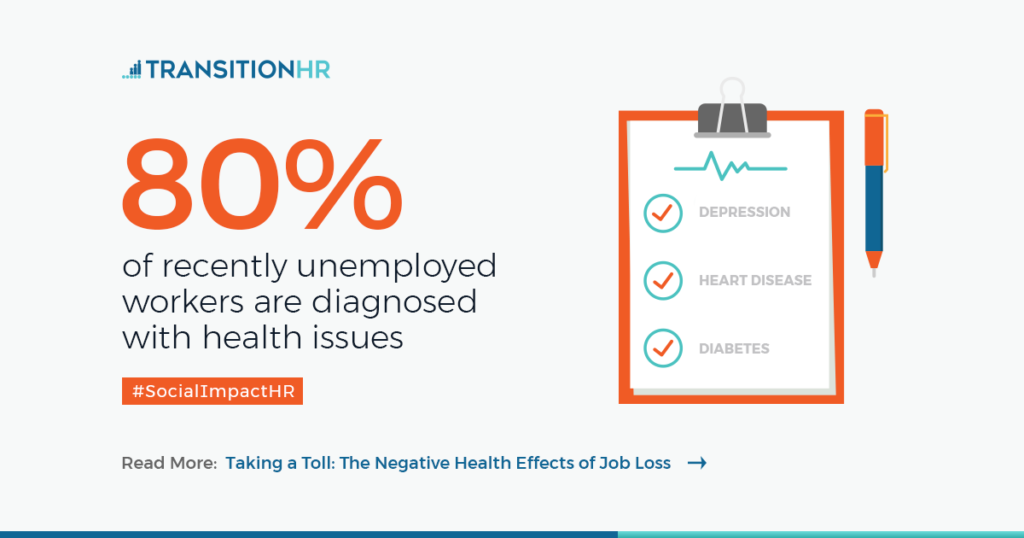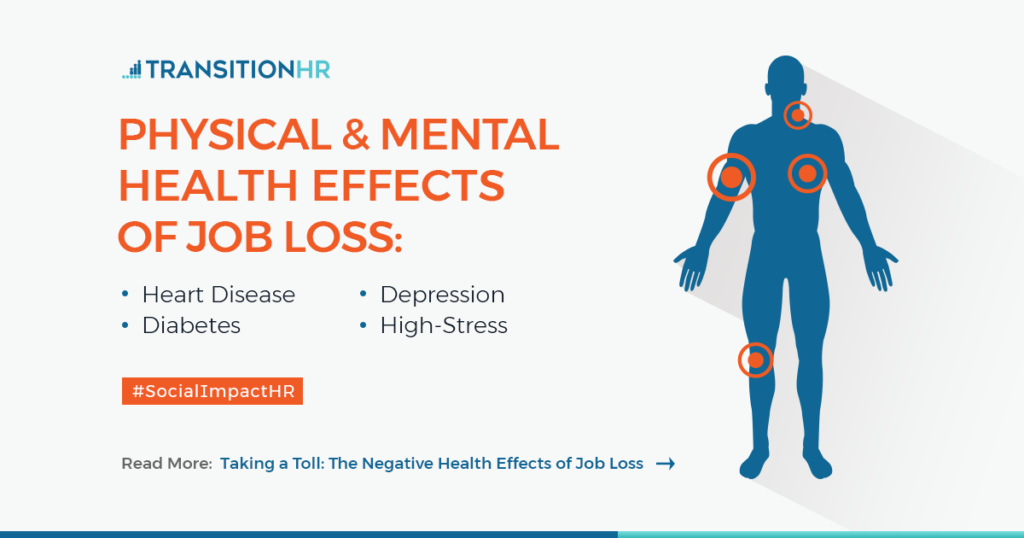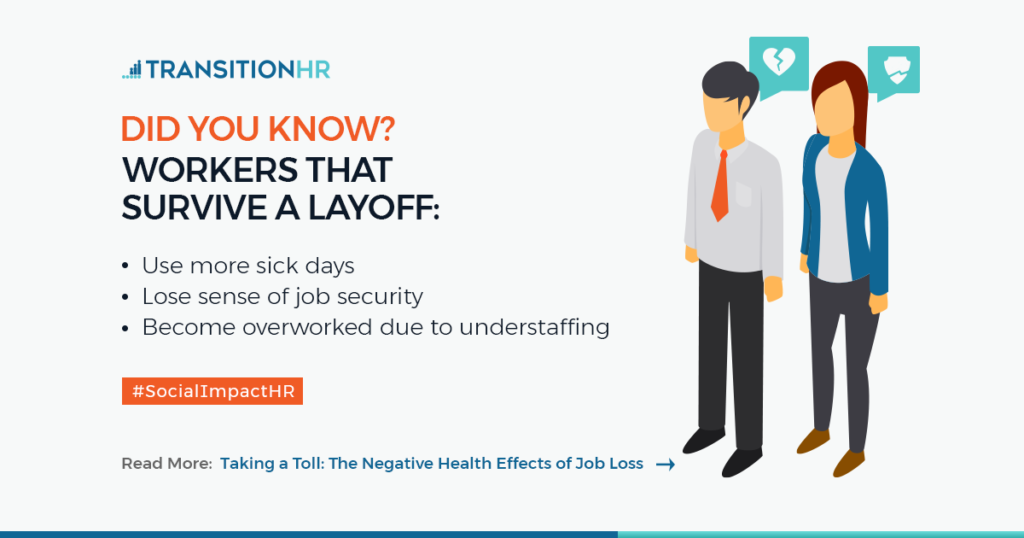Multiple studies over the past decades have revealed the negative physiological effects of unemployment and job loss. While expected, HR teams must remain mindful of this trend when developing and implementing offboarding and career transition solutions.
A 2009 study conducted by a sociologist at State University of New York found that serious illnesses often crop up shortly after employees were fired, laid off or displaced by a business closure.
The study, published in the journal Demography, found that 80 percent of newly unemployed workers were diagnosed with some form of illness. High blood pressure, heart disease and diabetes were most often reported, though other conditions such as arthritis and intestinal illnesses were also found.
The study found that individuals without preexisting health problems were 83 percent more likely to develop a new health condition following job loss. It also found that individuals who lost their job through no fault of their own (e.g. a business closure), were 54 percent more likely to report fair or poor health.
In addition to these harmful physiological health effects, job loss and unemployment can also be detrimental to individuals’ mental health. A study conducted in the 1980s – a decade that saw widespread downsizing – examined the effects of job loss and unemployment on men. It compared the levels of self-esteem, depression, anxiety, isolation and overall life satisfaction between those that were employed and unemployed.
Unsurprisingly, it found that the unemployed men had significantly higher scores for mental health struggles, reporting symptoms of anxiety, depression and alienation. The study also exposed a serious increase in the amount of medications taken, doctors’ visits and days spent sick in bed for the unemployed men. The unemployed men also reported an overall poorer state of health.
These studies and others demonstrate that the high levels of stress and anxiety caused by unexpected or prolonged periods of unemployment are harmful and unsustainable. The stress can even trigger hormone fluctuations that can spiral into heart problems and chronic pain or inflammation
It might be unsurprising that those who lose their jobs experience a decline in physical and mental health. However, it will surprise some to learn that employees retaining their jobs following a layoff or other form of workforce reduction also experience hazardous levels of stress.
These “surviving employees” are often left to shoulder the burden of having fewer coworkers, while also bearing the added stress and anxiety about their own job security. A 2003 study published by the Institute of Behavioral Science found that workplace injuries can rise, and there can be a spike in depressive symptoms, chronic pain, poor eating, worsening self-care habits and an increase in sick days taken.
The indirect harm done to layoff survivors can spread like a virus throughout an organization as word travels about terminations. If there is no clear vision of the positive steps the company has used in the past, workers begin to worry more about their future moving forward.
Despite these undesirable consequences, workforce reductions and other circumstances leading to job loss and unemployment are often unavoidable. However, organizations can help mitigate the adverse effects of job loss on all workers, by implementing socially responsible layoffs and offboarding processes. This will benefit employees losing their jobs, ease the minds of surviving employees, and support the image of the company as a whole.
A key component of socially responsible workforce reduction is to build reliable outplacement services and career transition resources into employee severance packages. With more affordable outplacement options available today, organizations off all sizes can benefit from offering employees these invaluable career transition services and support.
Modern, technologically-advanced outplacement firms not only help exiting employees transition faster into a similar career (reducing unemployment times) but they also help reorient workers to the current job market without feeling overwhelmed. Making these vital career transition services available is a simple way to have a positive effect on the well-being of every employee.
It is also a wise investment to start employee wellness initiatives and offer ways to help former, as well as surviving workers, gain access to counseling and support. Implementing simple employee health initiatives, such as making information for mental health counseling and wellness activities available, can also have a positive influence on the remaining employees, even if there is potential for more job cuts in the future.
It may seem unnecessary to make such sweeping changes for employees that are being let go, but it should be considered a necessary investment. Not only will your company maintain a positive reputation for establishing a socially responsible workforce reduction and offboarding process, but the long-term benefits will pay for themselves many times over. Former employees will be healthier, and they will attribute that to your business. Remaining employees will also stay happier and more productive, knowing if any reduction in force happens they can envision a positive outcome and know they are valued and supported.
- Supporting employees through a career transition requires a comprehensive and well-considered offboarding strategy. Ensure your business is prepared to offer financial, career-transition, and personal support to your staff.
- A reduction in force has a physical and mental impact on both outgoing employees and staying workers. Create an offboarding strategy that caters to each group.
- An outplacement provider will help reduce the time your employees spend in unemployment. Minimize the health effects of job loss by shortening its duration.









